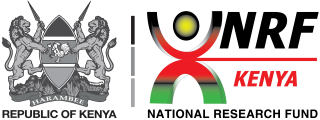Browsing by Author "Oduor, Nathan O."
Now showing 1 - 2 of 2
Results Per Page
Sort Options
Publication Soil water use efficiency under integrated soil management practices in the drylands of Kenya(Heliyon, 2023) Oduor, Nathan O.; Mucheru-Muna, Monicah; Mugwe, Njeri Jayne; Sijali, Isaya; Nyabuga, George; Mugendi, Njiru DanielSoil moisture scarcity and soil fertility decline in the drylands contribute to declining crop productivity. The possible synergistic effects of integrating soil & water conservation, and soil fertility management practices on soil moisture, and hence water use efficiency (WUE) in the drylands of Tharaka-Nithi County in Kenya was assessed. The experiment was laid in a three by three split plot arrangement, with four replications, for four cropping seasons. Minimum tillage with mulch, tied ridges, and conventional tillage formed the main plot factors. The sub-plot factors included animal manure plus fertilizer at 120, 60, and 30 N kg ha−1. There was significant improvement in soil moisture by 35 and 28% by minimum tillage with mulch and tied ridges, respectively, compared to conventional tillage. Manure plus fertilizer rates of 120 and 60 N kg ha−1 had significantly lower soil moisture by 12 and 10%, respectively than the 30 N kg ha−1 across the seasons. The WUE was significantly enhanced by 150 and 65% under minimum tillage with mulch and tied ridges, respectively, compared to conventional tillage. Compared with 30 N kg ha−1, the 120 N kg ha−1 and 60 kg ha−1 significantly enhanced the WUE by 66 and 25%, respectively. Across the seasons, the best treatment combination for improving WUE was minimum tillage with mulch at 120 N kg ha−1 rate of manure plus fertilizer.Publication Suitability of different data sources in rainfall pattern characterization in the tropical central highlands of Kenya(Heliyon, 2020-10-26) Oduor, Nathan O.; Ng'etich, Felix K.; Kiboi, Milka N.; Muriuki, Anne; Adamtey, Noah; Mugendi, Daniel N.Uncertainty in rainfall pattern has put rain-fed agriculture in jeopardy, even for the regions considered high rainfall potential like the Central Highlands of Kenya (CHK). The rainfall pattern in the CHK is spatially and temporally variable in terms of onset and cessation dates, frequency and occurrence of dry spells, and seasonal distribution. Appraisal of the variability is further confounded by the lack of sufficient observational data that can enable accurate characterisation of the rainfall pattern in the region. We, therefore, explored the utilisation of satellite daily rainfall estimates from the National Aeronautics and Space Administration (NASA) for rainfall pattern characterisation in the CHK. Observed daily rainfall data sourced from Kenya meteorological department were used as a reference point. The observation period was from 1997 to 2015. Rainfall in the CHK was highly variable, fairly distributed and with low intensity in all the seasons. Onset dates ranged between mid-February to mid-March and mid-August to mid-October for long rains (LR) and short rains (SR) seasons, respectively. Cessation dates ranged from late May to mid-June and mid-December to late December for the LR and SR, respectively. There was a high probability (93%) of dry spell occurrence. More research needs to be done on efficient use of the available soil moisture and on drought tolerant crop varieties to reduce the impact of drought on crop productivity. Comparison between satellite and observed rain gauge data showed close agreement at monthly scale than at daily scale, with general agreement between the two datasets. Hence, we concluded that, given the availability, accessibility, frequency of estimation and spatial resolution, satellite estimates can complement observed rain gauge data. Stakeholders in the fields of agriculture, natural resource management, environment among others, can utilise the findings of this study in planning to reduce rainfall-related risks and enhance food security.

